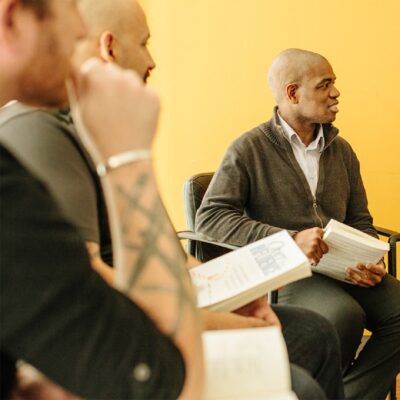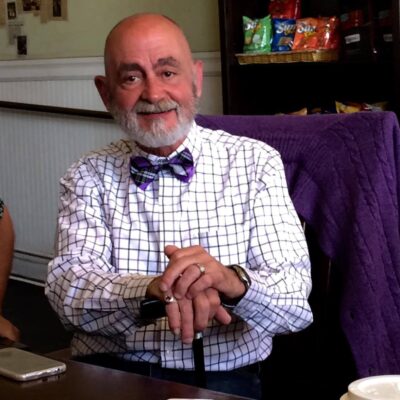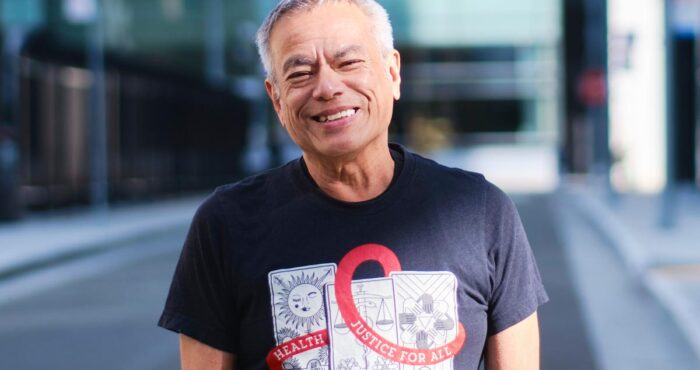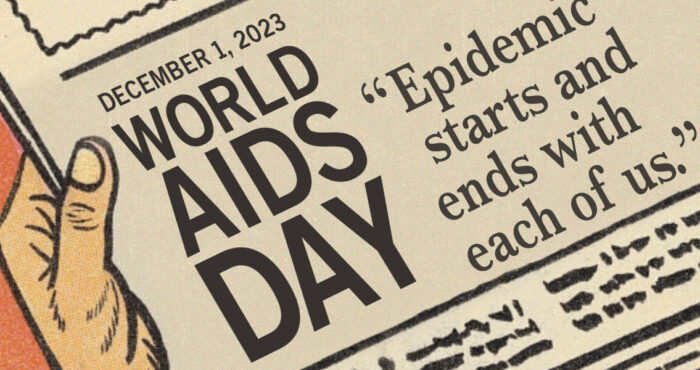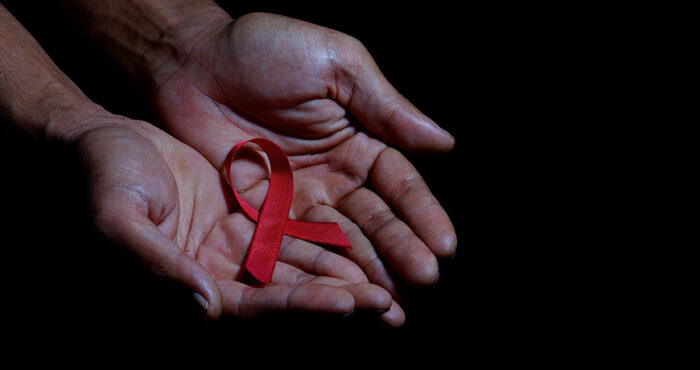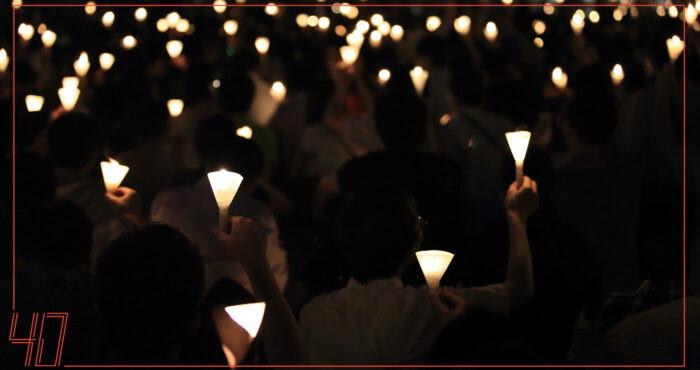Getting the Word Out
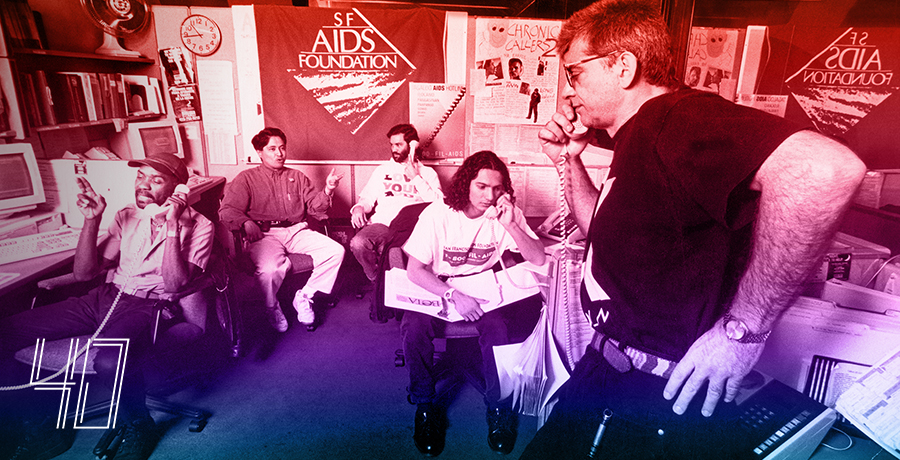
This article was produced in honor of San Francisco AIDS Foundation’s 40th anniversary, which we are commemorating in 2022.
Our experience with COVID-19 over the last two years has reminded us that when pandemics arise, they invariably come accompanied by confusion, fear, panic, blaming, and a plethora of misinformation regarding the pandemic’s origins, treatment, and prevention. No attempt at blame (the “Chinese virus”) is too outlandish; no supposed treatment too illogical or dangerous (horse de-wormer and bleach); no claim too outrageous or impossible (microchips in the vaccines). It seems there’s nothing quite like a worldwide health crisis to bring out all the conspiracy-spouting haters.
Those of us who lived through the earlier (and still ongoing) HIV/AIDS pandemic knew to expect this reaction because we had lived through the same kinds of things nearly forty years earlier. For the first couple of years of our first pandemic, when information was scarce and often contradictory, there was quite a lot of fear, not all of it irrational — gay men were terrified of catching or spreading the disease, and straight people were terrified of us. There was no lack of panic either, as evidenced by threats to quarantine everyone with HIV in a camp and tattoo us with a plus sign on our buttocks (we can thank William F. Buckley for that charming “solution”). As with COVID-19, misinformation about HIV was rampant: “you can get AIDS from a toilet seat”; “all gay men carry AIDS”; “only gay men get AIDS.” And Ivermectin has nothing on some of the ludicrous, harmful “cures” that were made up to fleece the desperate and dying.
Getting the word out — compiling scientifically accurate, nonjudgmental information about HIV; how it is transmitted, from whom and to whom; how it is not transmitted; how transmissions can be prevented; and how it can be treated, and getting that information into the hands of people living with or at risk of acquiring the virus — became one tool in combatting the misinformation and stigma surrounding HIV/AIDS. With the advent of the Internet, disseminating information became really easy — with just a few keystrokes, one can reach untold thousands of people with a single Tweet or posting on Facebook or Instagram. But in the early, pre-Internet years of the pandemic, we relied on the technology that was available at the time: the telephone and the printing press.
San Francisco AIDS Foundation was founded in 1982 as the Kaposi’s Sarcoma Research and Education Foundation by Dr. Marcus Conant, Frank Jacobson, Cleve Jones, Richard Keller, Bob Ross, and Dr. Paul Volberding, who took quick and decisive action in response to the mysterious disease that would later be known as AIDS. In a one-room storefront on Castro Street, the agency’s first service was a telephone information and referral hotline. The AIDS Hotline started as a single-telephone volunteer-run information and referral hotline. As the pandemic spread like wildfire through the community, and as the need for concrete information grew, the AIDS Hotline grew into a full-time operation with volunteers sitting around a room full of phones taking calls.
One of those volunteers, Cal Callahan, joined the SFAF AIDS Hotline in 1984. After two weekends of training and shadowing an experienced volunteer, Cal put in at least one four-hour shift each week. He recalls that the questions he got asked most “shifted over the years. For the first few years, there was still uncertainty about transmission and most questions were about risk and symptoms. HIV testing came out in 1985 and many questions shifted to that and soon after to the treatments that were coming out. As more services came into being, many of the calls were referrals to those services. There was always a percentage of ‘worried well’ who had no risk factors but were still concerned about contracting HIV. Some of them became repeat callers.”
Volunteers were supported by the Education Department at SFAF, which sifted through the available information (“which changed often as science developed a better understanding,” Cal said). Cal’s partner Glynn Parmley developed an “encyclopedia” for volunteers to utilize, with newest information put at the front of the encyclopedia and reviewed at the beginning of each shift and in periodic update meetings. Volunteers also had access to SFAF-produced pamphlets, brochures, and fact sheets to mail to callers upon request.
Gay men were not the only callers to the Hotline. Straight folks called too, but “not nearly at the same frequency but many of those questions were about casual contact or from ‘worried well’ people. There was a subset of straight guys who wanted to know if a woman ‘might have given him AIDS’ (there was rarely a concern that he infected her). They were our least favorite callers.”
Cal has been involved with the HIV community every since.
On the opposite side of the country, in New York City, young actor, singer, and playwright Bruce Ward was just beginning his theatre career in the Fall of 1984. Through the medical editor at the New York Native, a prominent LGBTQ publication, Bruce landed an interview with the NYC Department of Health AIDS Hotline as a hotline counselor. “I thought of it as just a part-time gig, to make money, but I come from a family of counselors and teachers, and I quickly found my passion for telephone counseling,” he told me. After a brief training, Bruce began working the hotline for two four-hour shifts; after the death of Rock Hudson, his time on the hotline increased to three four-hour shifts, sometimes more. Things were relatively primitive in the hotline’s office; there were no computers in the office, so all information was recorded on mimeographed sheets of paper, and the phones were all land lines.
As with Cal at SFAF, most of the calls Bruce fielded were from people dubbed “the worried well,” “mostly heterosexual calls, about mosquitoes, swimming pools, dried blood in presumably homosexual men’s apartments. Many calls conveyed a hidden anxiety: men calling about getting the virus from women, and during the course of the call, I would find out that the man was secretly visiting [sex workers]. Also men who were closeted and married to women. But every once in a while we would get a staggeringly emotional call, from a mother, or a gay man who is afraid he had it, or a partner.”
In 1986, Bruce became Assistant Director, then Director of the CDC’s National AIDS Hotline, where he led the training sessions for new counselors. “I was overwhelmed,” he said. “I was just a hapless actor/playwright, suddenly thrust into this major political position. And when Reagan said the word, ‘America responds to AIDS’ started, and we were major players.” The CDC and the American Social Health Association, which ran the national hotline in New York City, moved the hotline’s operations to Raleigh Durham, North Carolina. Bruce was charged with training the people who would replace him and his entire staff.
“My time at the NYCDOH hotline was exhilarating. I felt as if I was at the center of something huge. And I also felt I had found a new calling, and a passion for counseling and teaching. We all felt at the time that if we just worked hard enough, we would defeat this virus… It was also exhilarating starting as assistant Director at the National AIDS Hotline. I helped the interim directors search for a space, and I loved the concept of building something from scratch. I was in charge of hiring the operators and the volunteers who worked on the hotline and, like at the NYCDOH, it felt like we were on the precipice of something huge.”
It was also at this time that Bruce tested positive for HIV. The combination of his worsening health and “the anxieties and tensions and political fumblings of the job,” and the anxiety of hiding his serostatus from his co-workers at the CDC and ASHA, Bruce hit his breaking point. “I was way over my head, and I was sick and exhausted. It was the only time I thought about taking my own life. But that job taught me something. I love teaching, and I love counseling. But I am not a policy person, or a political wonk. And that was a big lesson — I had my limits.”
Often, volunteers like Bruce and Cal report that their work affected them as much as the clients for whom they volunteered. Cal Callahan expressed it well:
“It was very affecting; I was living with HIV all around me, but this gave me the sense that I was helping other people. I had some long calls that were more about sexuality and orientation where I really felt I’d made a difference in that person’s life. People were often much more willing to share parts of their lives with an empathetic but disembodied voice than with someone who knew them.
“I learned that everyone, whether you liked them or not, deserved to be given good and useful information, and to be treated with respect. I also learned that people tend to be at their best when doing something good for others. We became a very tight-knit group for quite a while.”
In addition to the AIDS Hotline, San Francisco AIDS Foundation began publishing BETA: Bulletin of Experimental Treatments for AIDS in 1988. The Foundation had prepared and disseminated numerous brochures, pamphlets, and posters around San Francisco and beyond as part of their efforts to educate the public about HIV/AIDS. But BETA was its first magazine-length publication. Issued quarterly, BETA reviewed available scientific data on AIDS treatments as well as anecdotal information provided by physicians, researchers, people with AIDS or AIDS-related conditions, and individuals living with HIV. The magazine was distributed to clinics and AIDS Service Organizations in San Francisco as well as all fifty states and Puerto Rico. BETA was also available through individual subscriptions (free to HIV-positive low-income people living outside San Francisco). Each issue nearly burst at the seams with reliable, comprehensive, science-based, up-to-date information about the treatment of HIV/AIDS. Reports on new treatments, reviews of important drug studies, listings of then-current open clinical trials of new medications, reports on the information presented at HIV/AIDS conferences — BETA provided this and other much needed, hard-to-find information.
With the advent of HAART, articles in BETA began to offer more personally useful information, such as how to talk to your physician about your HIV status, the effects and side effects of new medications, the possibility of multi-drug interactions, food safety guidelines, combatting HIV drug-related diarrhea, and other real-life issues. BETA was also one of the first publications to address the issues specific to women with HIV, including mother-to-child transmission of the virus and gender-related differences in responses to antiretroviral therapy. In 1997 and 1998, the magazine also produced and distributed a series of “Information Sheets” on the protease inhibitor drugs and treatment strategies.
In 1992, John Maguire introduced the comprehensive computerized database as a joint effort of SFAF and the SF Public Library (John worked for both). That began the shift to online information. BETA first went online in 1994; the website highlighted the then-current issue and made past issues of BETA available for download as PDF files. In 2013, on the publication’s twenty-fifth anniversary, BETA Blog became an online-only publication with a new mission statement: “BETA reports on developments in HIV prevention, treatment, and strategies for living well with the virus. BETA promotes health literacy and provides tools to help readers understand meaningful developments in HIV research, access medical treatment, and get the greatest benefit from care.”
From its inception, San Francisco AIDS Foundation has prioritized getting the word out about HIV/AIDS, how the virus is transmitted, how to prevent transmissions, available treatments, how to access healthcare services, how to access other services and benefits, how to get and use PrEP, and other issues around the virus like systemic racism, homophobia and transphobia, misogyny, and navigating the for-profit healthcare system. After you’ve finished reading this article, browse through the rest of the Foundation’s website. You’ll find articles about advocacy for trans individuals, racial equity in healthcare, anal health and sexual health, the FDA approval of a condom for anal sex, and much, much more. Forty years into the HIV/AIDS pandemic, the Foundation can still be relied upon for current, accurate, science-based, useful information. Please put it to good use!
Commemorating 40 years
Join us every month in 2022 as San Francisco AIDS Foundation marks 40 years of service to the community.
On this occasion, we take a look back and share our storied history of leadership in HIV prevention, education, advocacy, and care, and HIV history in San Francisco and the Bay Area since the beginning of the epidemic.
As we look back on our history, we approach the future with hope, and with a renewed sense of all that our passion and ingenuity can bring to enact positive change in our community. We will act in bold and brave ways to reach an end to the AIDS epidemic, and ensure that health justice is achieved for all of us living with or at risk for HIV.
After 40 years, we will not lose sight of our commitment to our community, and our vision for a brighter future.




